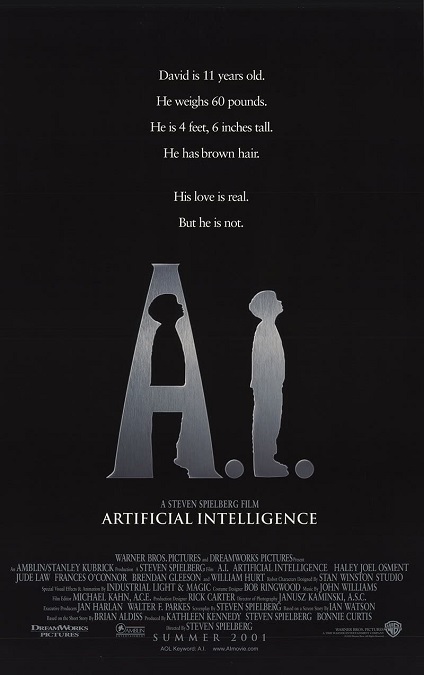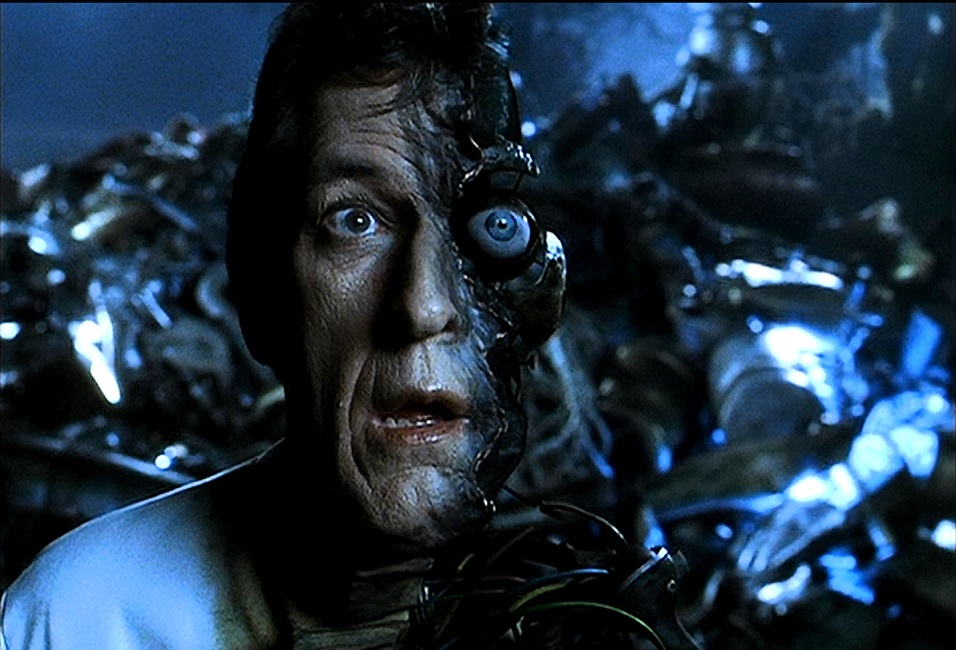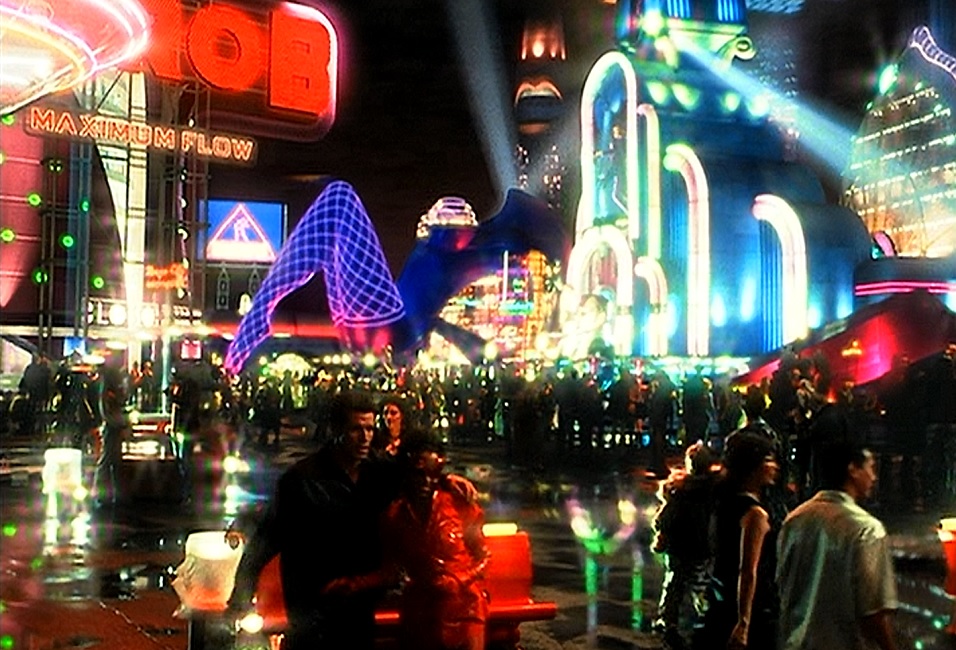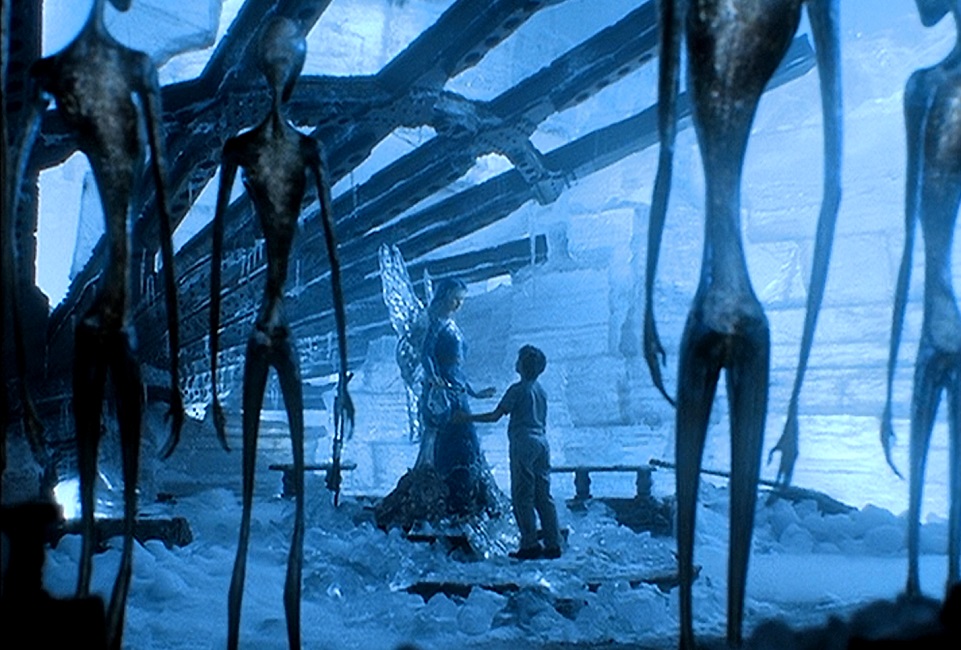



A.I. Artificial Intelligence

I’ll start this off by saying that this is one of my favorite movies of all time, definitely within the top twenty. With that in mind, I will try to keep this review unbiased and a little more objective. One of the reasons I like this movie so much is the special effects, which were phenomenal. When you see a film by Steven Spielberg, you know you are in good hands. The techniques used in this film had never been accomplished in such a perfected way before. For example, right in the opening scene, a live-action actress’s face suddenly opens up to reveal that she is a mechanical robot. It was incredible. And when her face closed, the CGI seamlessly turned back into the live actress. The transitions were perfect.
But that was just the first scene. The entire movie was filled with incredible images that were varied and imaginative. There were actors with half of their faces burned off to reveal mechanical structures underneath. There was the Flesh Fair, in which robots with human faces were destroyed in various vulgar ways. There were three dimensional holograms, flying vehicles, and the New York City skyline rising up out of a risen ocean.
And then there was the main character, David, so incredibly played by Haley-Joel Osment. Though he acted the part of a human being, there were scenes in which he had to be opened up to reveal his mechanical insides. We saw him sitting under water without drowning, and we saw his mecha-siblings in various stages of construction. Watching him decapitate an image of himself was pretty meta.
And there were two specific environments in the film that I still find impressive, every time I watch the movie. There was Rouge City, which was like a hyper-sexualized and futuristic version of Las Vegas, and there was the submerged, and later frozen, depiction of New York. Rouge City was made up of dozens of different images which combined live action and CGI effects. In these shots, there were sensors on the ceiling of a blue-screened set that connected the environment to the camera movements, allowing Spielberg to see accurate three-dimensional visualizations of a composited scene while the actors were being filmed.
The only real visual effects disappointment in the movie were the advanced mecha-robots of the far-future sequence. Their look, while very alien, to be sure, was good enough, but it was their movements that gave them away as fake images. Maybe their stilted movements were an intentional affectation, but I don’t think so. They reminded me of early CGI characters that had a kind of unnatural way of moving that was too smooth, and yet too jerky, to be realistic. If David and Joe could move naturally in the present, why did their advanced counterparts of two thousand years in the future move like animated Poser figures? That made no sense. But I think that if that was the films only real flaw, we’re doing just fine.